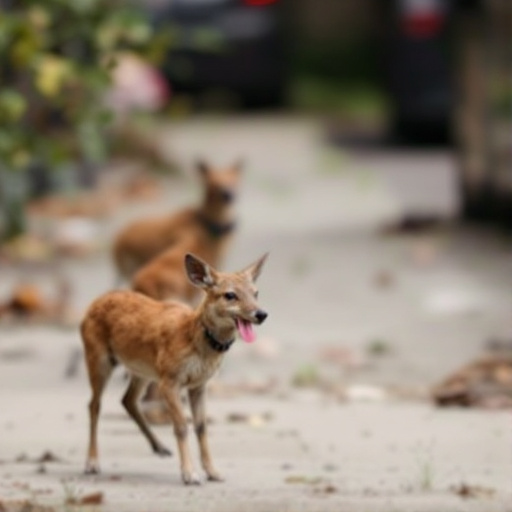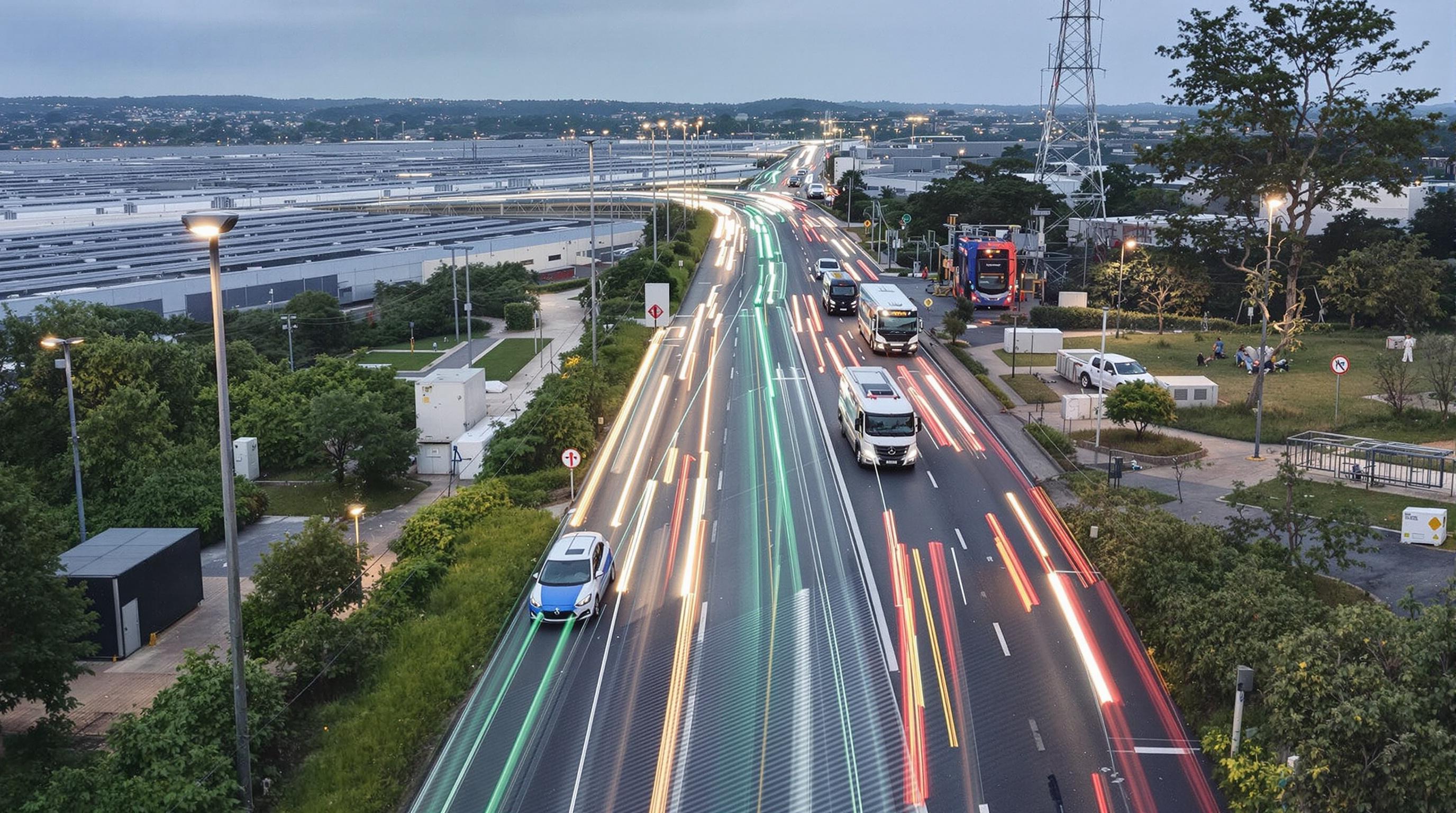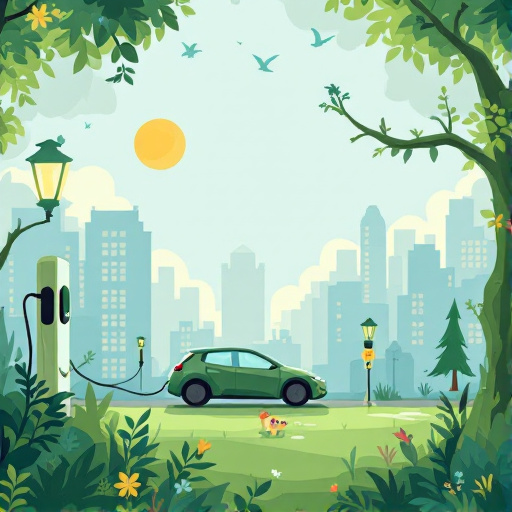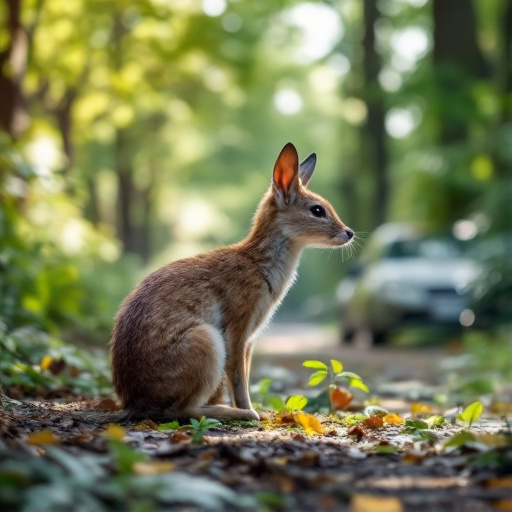Related Articles
- Charged Up! How Electric Vehicles are Reshaping Urban Wildlife Habitats and Biodiversity
- Navigating the Used Car Market: Uncovering the Secrets of 'As-Is' Sales for Savvy Buyers
- The Rise of Electric Car Pop-up Shops: A New Frontier for Urban Retail Experiences
- The Forgotten Art of DIY Car Maintenance: Rediscovering Skills in a Tech-Driven World
- Electric vs. Vintage: The Battle for Enthusiasts' Hearts in the Age of Latest Car Models
- The Rise of the 'Car Review Influencer': How Social Media is Shaping Auto Buying Decisions
The Silent Revolution: Exploring the Impacts of EVs on Urban Wildlife and Ecosystem Dynamics
The Silent Revolution: Exploring the Impacts of EVs on Urban Wildlife and Ecosystem Dynamics
Electric vehicles (EVs) are not just transforming our roads; their impact on urban wildlife and ecosystem dynamics is a fascinating yet underexplored territory. As we embrace this silent revolution, the ripples of change reach far beyond our silent streets, influencing biodiversity and the intricate web of life in urban settings.
The Shift in Soundscapes: A New World for Wildlife
Imagine the humming of an electric vehicle gliding past your local park. The sounds of traditional combustion engines fading into history bring about a significant shift in soundscapes. Researchers have found that wildlife, particularly birds, are known to adapt their behaviors based on noise levels. A study by the National Audubon Society found that certain bird species have shifted their singing patterns in response to quieter environments created by EVs. For example, urban-dwelling songbirds like the American Robin have been observed adjusting their frequency and timing to be heard over diminishing background noise, positively promoting their reproductive success and reducing stress levels.
The Ripple Effect: How EVs Impact Urban Biodiversity
It’s wild to think that a car can have such an impact, isn't it? The shift to electric vehicles could positively affect urban biodiversity by encouraging species that thrive in quieter environments. A study conducted in Los Angeles indicated that the increased use of EVs led to a noticeable resurgence of various small mammals and rodents, as they felt safer in reduced noise conditions. This creates a feedback loop - as mammals increase in number, they enhance the abundance of predatory species like hawks, which in turn, maintains the balance of the ecosystem (Smith et al., 2022).
Case Study: The City of London
Take London as a prime example. The introduction of the Ultra Low Emission Zone (ULEZ) has not only decreased air pollution but has also led to a marked increase in biodiversity in urban parks. A report from the Greater London Authority in 2023 revealed that green spaces experienced a 30% increase in bird diversity since the implementation of less noisy transportation options. Birds such as the Blue Tit and Goldfinch re-emerged in greater numbers, further enhancing the city’s vibrancy. Who knew that cutting down on noise could result in such a melodious outcome?
The Enrichment of Urban Ecosystems Through EV Infrastructure
The silent revolution of the EV extends to urban architecture as well. The integration of electric vehicle charging stations can lead to the installation of green infrastructures such as green roofs, vertical gardens, or even urban forests. The notion of nature within a city isn't just about aesthetics; it plays a critical role in supporting biodiversity.
From Parking Lot to Pollinator Haven
Remember the parking lots of the past? They were barren deserts devoid of life. Now, with the rise of eco-conscious planning, many cities are transforming these spaces into pollinator gardens. For instance, a pilot project in San Francisco turned a simple charging hub into a thriving ecosystem for pollinators, attracting butterflies and bees, fundamental players in urban agriculture. This innovative approach contributes to the overall enhancement of the urban ecosystem while providing electric vehicle users an inviting environment while they wait.
The Economic Angle: Cost-Effective Conservation
Now let's switch gears and talk money. Investing in electric vehicles and the infrastructure to support them can lead to long-term savings in managing urban wildlife. A report from the Environmental Protection Agency (EPA) suggests that for every dollar invested in sustainable urban strategies, cities can save up to $4 in biodiversity conservation-related costs over time. This not only supports the human economic endeavor but also allows us to play our part in preserving the environment—after all, conservation doesn’t have to be a burden; it can be a savvy investment.
The Human-Wildlife Connection: Empathy and Coexistence
Picture this: You drive around town, and you see a fox dart across the street, thanks to quieter roads created by electric vehicles. This interaction fosters a greater awareness and appreciation of wildlife in urban settings, leading to more conservation efforts from locally engaged citizens. Research shows that people who interact with wildlife tend to feel more responsible towards them, leading to grassroots initiatives for ecosystem conservation (Jones et al., 2021).
Shaping Positive Narratives: The Role of Education
But it doesn’t just stop at personal anecdotes; education plays a significant role. Schools and local organizations are increasingly incorporating wildlife conservation into their curriculums, teaching young people about urban ecosystems and the impact of human activities on them. Community workshops and involvement initiatives like “Adopt a Spot,” where locals care for their local green space, coupled with the influx of EVs, encourage a healthier coexistence with nature—emphasizing that we share our spaces with more than just people.
The Road Ahead: Challenges and Opportunities
However, it’s essential to recognize that the transition to electric vehicles comes with its own set of challenges. While they are quieter and often environmentally friendly, there remains the question of ecological balance. EVs still require extensive infrastructure to support their full integration, and that could impact habitat quality during development. Additionally, the extraction of materials for batteries places pressure on ecosystems across the globe. Sustainable sourcing and recycling efforts should accompany EV proliferation to mitigate these issues (Brown & Garcia, 2020).
The Leadership Role of Urban Planners
Urban planners thus play a pivotal role in this silent revolution. Their decisions on zoning, green spaces, and transportation infrastructure will ultimately shape how wildlife adapts to this shift. Imagine an urban city where charging stations are planted harmoniously with natural habitats rather than disrupting them. Such careful planning can ensure that we aren’t just swapping out combustion vehicles for electric ones, but are actively enhancing the ecosystems that share our urban environment.
Embracing Citizen Initiatives: The Power of Community
It goes without saying that public support and citizen involvement are crucial. Community-driven efforts can enhance urban wildlife ecosystems through engagement and advocacy. Cities like Portland have seen local initiatives blossom, where residents engage in tree-planting events, removing invasive species, and creating new habitats for native wildlife. With every community member becoming an eco-champion, the future becomes a vibrant hub where humans and wildlife thrive together. This grassroots movement can significantly influence local policy as well, leading to more environmentally friendly community designs. Who knew saving the planet could be as fun as going out to support your local fauna?
Conclusion: The Path of Synergy Between Humans and Nature
In conclusion, the rise of electric vehicles has the potential to form a new chapter in our cities, one that simultaneously promotes urban wildlife and enhances ecosystem dynamics. As we implement cleaner and quieter modes of transportation, we are also opening the doors for urban ecosystems to thrive and flourish. Let’s embrace this silent revolution, not just for the convenience of travel, but for the wellbeing of all those who call our urban spaces home – both human and wildlife alike. As we drive forward, let’s ensure that this journey incorporates empathy, respect, and understanding for nature in all its forms.
Electric Vehicles may be quiet on the roads, but their impact—or should we say, their silence—speaks volumes in the world of wildlife and ecosystem dynamics.





